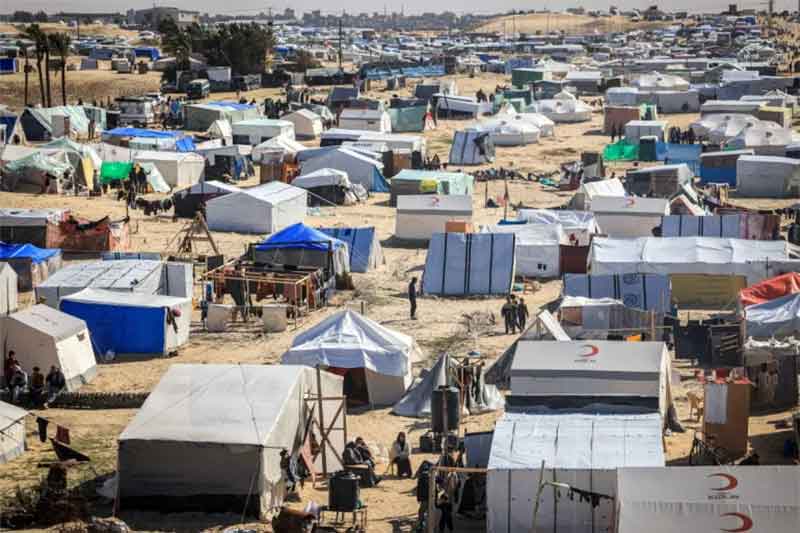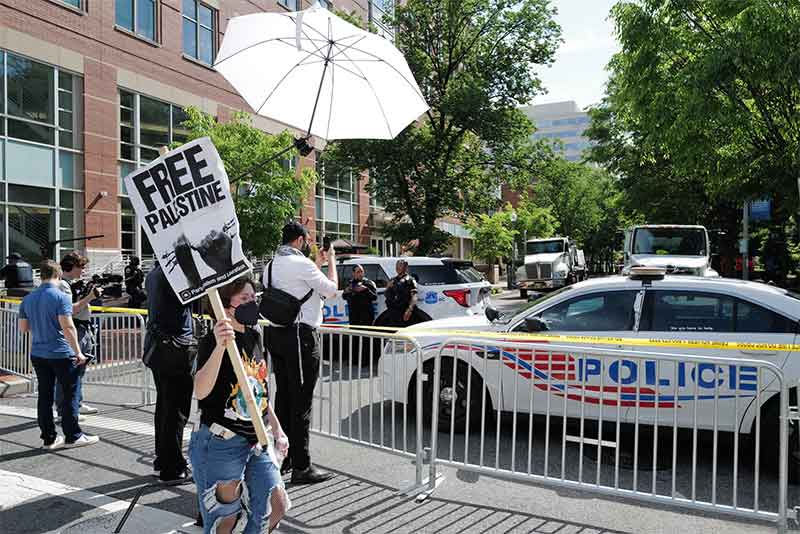
On the start of the fifth month of the war on Gaza, Israel is nowhere near to controlling the 365-kilometer Strip. While its army previously thought it would dominate the strip in a matter of weeks, today it is still fighting in what is being termed as the Gaza quagmire of defeat, bloodiness and mass loss in human lives and armory.
While it is true, they wreaked merciless havoc on the enclave and displaced up to 1.9 million of a population of 2.3 million, the majority of which were ordered to go south to Rafah, the Israelis, with their guns, planes, tanks, bulldozers and troop carriers, have not as they claimed subdued Gaza.
While the Israeli Defense Minister Yoav Gallant said the Israel army dominated the northern part of Gaza and dismantled the Hamas infrastructure, it soon became clear this was completely untrue with news of fighting and skirmishes dominating the headlines.
The Palestinian resistance, of mainly Hamas’s Izz Aldin Al Qassam and Saraya Al Qodus of Islamic Jihad, are still going strong in Gaza by the admission of the Israelis and the Americans with Washington talking openly about the formidable force being put up, despite the armor of the Israelis that is mostly US-made.
Bloody conflict
This is proving to be a difficult bloody conflict for the Israelis despite their carefully planned war strategy that was laid out and carefully planned in tandem with the 2000 American “advisors” sent to Tel Aviv soon after 7 October. This war strategy involved striking Gaza’s infrastructure from the air, sea and ground troop forces by splitting the region into north, middle and southern sectors.
It was supposed to have operated on a step-by-step basis – completing one step, ie, the north, combing it from Palestinian fighters, going to the middle, and then south to Rafah, the border town with Egypt. The problem today is the Israeli army and warplanes are fighting on all directions and more/or less at the same time.
They have not been able to control areas and/or sectors despite the heavy bombings. What they so far achieved, minus the ending of the military presence of Hamas and Islamic Jihad is to kill Palestinians, most of whom are civilians, destroy their homes, and apartment buildings and turn them into internal refugees.
The Israeli strategy since the beginning was to force the Palestinian population to start moving from the north, to the center and the south of the country. They were forced to do that by missiles but even here, they didn’t succeed for around 700,000 people still remain in the north of the Strip, right to down to the center of Gaza City and just below the refugee camps of Breij, Maghazi, Nuseirat down Khan Younis and its surrounding areas.
Israeli ground forces didn’t manage to enter Khan Younis because of stiff resistance despite the destruction and debris meted out from the air. They have been battling to enter the city for over two months but have not been able to despite the thousands of troops and tanks allocated for the task. In the end, many of the Israeli battalions and brigades had to draw back to the periphery of the Gaza Strip because of the huge loses in their ranks and which they wouldn’t divulge but carefully controlling their words.
Instead of uniting the Israeli political establishment, the war on Gaza added to their frustration and internal bickering. First, the relatives of the hostages taken by Hamas after 7 October, kept hounding the politicians for a ceasefire. They wanted their relatives to be brought out alive especially with news some of these hostages were being killed because of mass bombings by the Israeli force.
This lead also to bickering in the Israeli war cabinet about the conduct of the war that was personally led by Benjamin Netanyahu. Then, there was the main Israeli cabinet who met to consider with many problems coming out from that direction. There was frustration in the war cabinet about how Netanyahu conducted himself vis-à-vis Defense Minister Gallant and the army Chief of Staff Herzi Halevi whose soldiers were on the battlefield getting killed.
There was also a sense of paranoia as Netanyahu installed strict searching procedures of the war cabinet members themselves which created animosity. But then there was their conducted of the war which was strictly monitored by the larger Israeli cabinet, most of whom calling for the ethnic cleaning of Palestinians, reoccupation of Gaza, and the deportation of the people who came to Rafah into neighboring Egypt, into to the Sinai Peninsula.
The idea of deportation of Palestinians has long been seen as a dream of the extreme rightwing member of the Netanyahu cabinet, people like Itamar Bin Gvir and Bezalel Smotrich who saw this a valuable opportunity.
Rafah, where to next?
Is this the end of the road for the displaced Palestinians. Can they be deported under the eyes of the world and to where?
Rafah used to be a city with a population of 280,000. Today, its population quickly jumped to 1.3 million thanks to the Israelis coming to be called “tent city” because of the shabby material hoisted to house the displaced.
Everyone fears for their fate. After all, it is Israeli warplanes which forced them to move down here. The next logical step, unless they are stopped, is to tip them into the Sinai Peninsula, another wave of refugees, this time much worse than the 1948 debacle when Israel was created.
Will the Israelis do that under intense international pressure? There are two countries that can stop them: America and the Egypt. The Americans have long said they are against deportations and they want the creation of a Palestinian state.
But the problem is their opinions and statements have been interpreted as lifeless with no punch, after all they have been Israel’s main military suppliers in this war and their words don’t seem to carry much weight by Netanyahu and Gallant who are more interested in defeating Hamas and getting rid of the Palestinians.
Lastly, it might be up to Egypt to stand strong. It has already said it is against any attempt to change the demographics of the area. In a way, it still controls the entry key to crossing the border and can put its foot down. The problem here, the crossing continues to be under the watchful eye of the Israelis who keep bombing it if they see anything not according to their taste. They have already bombed it four times.
This time, together with the United Nations, the White House and the Egyptians will need to impose an enormous amount to pressure to force the Israelis to backdown.
We wait and see!
Marwan Asmar is a writer based in Amman, Jordan.









































